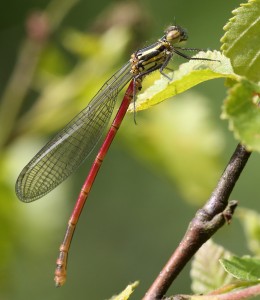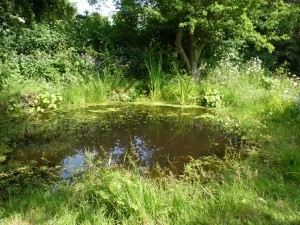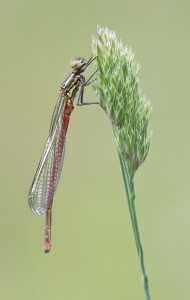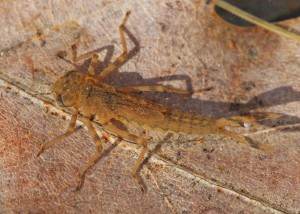Large Red Damselflies
The establishment of Large Red Damselfly Pyrrhosoma nymphula in the Filey recording Area.
Current Status
Until 2013, the Large Red Damselfly was not considered to be resident within our area, the only records occurring as sporadic influxes of migrants and no breeding noted. In May of that year, however, activity was observed at the Top Scrub pond, and breeding and ovipositing were regularly recorded during the 2013 season, with as many as five mating adults observed at the site at any given time. Further to the establishment of this colony, breeding individuals were also noted in a garden pond at Hunmanby Gap in the same season.
Successful breeding was confirmed in the Top Scrub pond in January 2014, when nymphs were recorded during invertebrate sampling. Adult emergence and mating were again recorded from the pond (albeit in lower numbers) in the spring and summer of 2014, while successful colonisation of the Hunmanby Gap area was confirmed with further breeding activity there during the season.


A newly-created garden pond colonised by the species at Hunmanby Gap
Why Colonise Now?
Habitat change
Large Red Damselflies are typically a species of late-successional ponds or smaller waterbodies with an abundance of emergent and marginal macrophyte cover. The Top Scrub pond typifies a late successional waterbody perfectly, a feature reflected in its odonata community (including breeding Ruddy Darter Sympetrum sanguineum, for example, a species with similar habitat requirements). Large Red Damselflies are widespread in Yorkshire, occurring abundantly north of the recording area, increasing the likelihood of colonisation attempts which may have failed up until now.
This may have been due to a lack of suitably mature or densely vegetated small waterbodies, which have been hitherto limited locally as a result of a preference for wader and wildfowl management schemes and a relatively recent increase in the creation of smaller ponds (of sufficient age/structure). This may also be linked to the maturation of surrounding scrub, hedgerows and ruderal vegetation communities, imperative for shelter, adult roosting and foraging.
Climate
Large Red Damselflies, as well as most other odonata in Britain, are currently experiencing notable range expansions, largely as a result of climate change. Invertebrates are highly dependent on micro-climate features as both adults and nymphs. Historically the ponds may not have offered sufficient shelter or warm microclimates for this species to successfully complete its life cycle. This is linked to the reasons above, whereby increased terrestrial habitat structure may have increased microclimate abundance and diversity.


Large Red-eyed Damselfy nymph
Also linked to this is the phenology cycle of this species, in which it is now emerging up to a month earlier at some sites compared the early 1990’s. This earlier emergence may allow more time for completion of the life cycle, which has not previously been an option in the local context due to a shorter time frame and the restrictions of sub-optimal habitat.
Wider population
Another possible theory is that the species is increasing in abundance in marginal areas beyond the recording area. Local habitats may therefore have increased in value as a result of intra-specific competition in these areas, and a subsequent increased dispersion due to a growing population, from these colonies resulting in the ponds within the recording area being more readily used.
Conclusion
It is possible that a combination of these theories, or indeed other undiscussed theories – i.e. winter survival, changing land use outside the area, or change in other odonata assemblages – are responsible for the recent colonisation. The next few years should reveal whether self-sustaining colonies persist within the area or not. It will be interesting to see if other ponds are colonised, or how a retraction of the species local range beyond the our boundaries would affect our population. It would also be interesting to see how the species copes with localised setbacks such as pond desiccation. For the near future at least, however, we have another fantastic addition to our local invertebrate fauna.
By Dan Lombard
